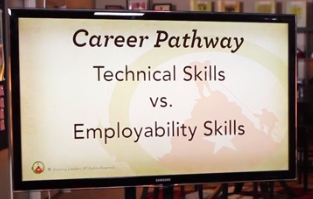This is a great article talking about the importance of knowing who you are as a coach and a leader, finding your voice, and knowing what you want to get out of your team. Steve Kerr, upon taking over as the head coach of the Golden State Warriors, watched the Seattle Seahawks and met with their head coach Pete Carroll. He admired their energetic style and the way that they mixed having fun with making competition part of everything that they do.
Below are some of the highlights and takeaways. You can find the article in its entirety here.
As The Article States, Only 20% Is X's And O's. 80% Is Relationship, Atmosphere And Culture.
PLAY HARD | HAVE FUN
BELOW ARE HIGHLIGHTS FROM THE ARTICLE:
Find
Your Own Style
It's no secret around Seattle, and the NFL for that matter,
that Pete Carroll's coaching style is unique in a lot of ways. Music plays over
the loudspeakers at practice, there's a basketball free-throw competition
amongst players and coaches every day, and Carroll encourages his players to
not only work hard on every snap they take, but to enjoy doing it. Carroll
tried to do things a traditional way early on in his career, but, as Peter King put it last year:
"Ultimately he formulated a blueprint that was heavy on fun and competition and taking advantage of the uniqueness of each individual."
Somehow, in his first year as a
head coach, Kerr has managed to construct a coaching staff and an environment
that's just about the most fun anyone involved has ever been around. And yet
when they need to be serious, they can flip the switch instantly.
Be Loose, Be Gunslingers,
But Be Disciplined.
"Guys are getting hit in the
head with the basketball. It's a complete circus. And then it's right down to
business. It really is. Kerr's always telling us, 'Be loose, be gunslingers,
but be disciplined.'"
Fast, Loose, And Disciplined All At Once
"The reason I went up there is because I want my team to play like the Seahawks," Kerr says. "They're fast and loose and disciplined all at once. I wanted to know how you achieve that."
"The reason I went up there is because I want my team to play like the Seahawks," Kerr says. "They're fast and loose and disciplined all at once. I wanted to know how you achieve that."
Everything Is A
Competition
One thing he noticed is that
Carroll turned everything into a competition. So you don't just swap
basketballs for footballs and tell the guys to mess around, you turn it into a
passing competition. You don't just cancel practice and go bowling, you turn it
into a tournament as the Warriors did before a February game in Minnesota.
Fun, Entertaining,
and Energetic
"I
always loved Pete Carroll," Kerr said recently. "Hated USC (Carroll's
former coaching stop) but loved Pete Carroll. And loved the way his teams
played. "They just won the Super Bowl. They play this fun,
entertaining, energetic style. That's exactly how I want my teams to
play."
80%
Relationship and Atmosphere | 20% X’s and O’s
"To me the X's and O's... they're an important part of coaching but a relatively small part. Eighty percent of it is just relationships and atmosphere, what your daily routine and culture is.
"To me the X's and O's... they're an important part of coaching but a relatively small part. Eighty percent of it is just relationships and atmosphere, what your daily routine and culture is.
"Are players engaged, are they enjoying
themselves, are they competing? All those principals he talked about and we
talked about different ideas of ways to make those things come to life. To me
that's his gift."
Find Your Own Voice
"It made sense to Steve on
some levels," Carroll said of the Seahawks style. "And I was mostly
just supporting him to be himself, find his voice and be the way he felt strongest
and most confident, and that would be his best way. So whatever he's done, it's
working out great."
How This Will Help Me Tomorrow:










